By: Harshith Chinni, a HISTOYOUTH writer
Beneath the surface of society’s tapestry, black culture has intricately woven its way, creating an unforgettable mark on history. From the soulful melodies of jazz to the enthralling strokes on canvases of African-American artists, black culture emerges as a profound force that enriches our collective narrative. But, it was not always like that. Behind this tapestry lies a history of struggle, resilience, and never-ending determination, and it is still going on. From slavery and segregation to now an unapologetic and unwavering force, black culture has redefined identity, shattered stereotypes, and become a beacon of hope and inspiration.

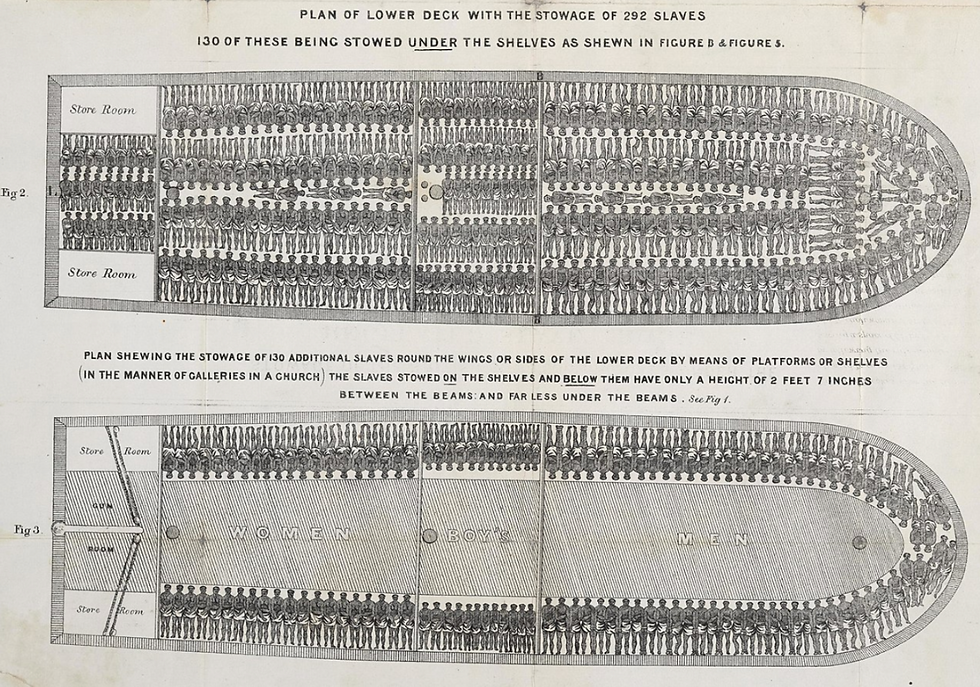
Between 10 and 12 million enslaved Africans were transported to the Americas during the transatlantic slave trade across the Atlantic Ocean. The journey was demoralising for them. “The iron entered into our souls.” lamented a formerly enslaved man called Caesar while he ruminated on the shackles he had to wear upon himself during the journey from Africa to the New World (a term used by European explorers to describe the Americas). The metal, resembling handcuffs, cut into Africans’ skin for the extended period of time spent at sea. Spotting children was no surprise, as they were more “economical”. More children could be fitted onto a ship, rather than adults, thus making 26 percent of the captives children. “I was soon put down under the decks, and there I received such a salutation in my nostrils as I had never experienced in my life: so that, with the loathsomeness of the stench, and crying together, I became so sick and low that I was not able to eat, nor had I the least desire to taste anything. I now wished for the last friend, death, to relieve me.” quoted author Olaudah Equiano. Approximately 15 percent of each ship’s enslaved population died before they could reach land.
Slavery was a deeply oppressive and dehumanising era in the entirety of the history of the United States. Other than being separated from their homes in Africa which caused emotional and psychological trauma, these slaves were whipped or beaten from working too slowly, or sometimes even for the homeowner’s glee to make him more “authoritarian”. The diets of enslaved people were inadequate or barely adequate to meet the demands of their heavy workload. They lived in crude quarters that left them vulnerable to bad weather and disease. Their clothing and bedding were minimal as well. The heat and humidity of the South, where slavery was primarily located in the United States, created health problems for everyone living there. However, the health of plantation slaves was far worse than that of whites. Unsanitary conditions, inadequate nutrition and unrelenting hard labor made slaves highly susceptible to disease. Illnesses were generally not treated adequately, and slaves were often forced to work even when sick. On the rice plantations, child mortality was extremely high too, usually around 66%.
This appalling situation was exacerbated by the harrowing reality that these enslaved individuals were constantly subjected to the dreaded specter of being sold. Even if their master was "benevolent," slaves knew that a financial loss or personal turmoil could lead them to the auction block. Also, slaves were sometimes sold as a form of punishment. These slaves were treated as property, like mere chattel, as opposed to humans. They were stripped of basic human rights, such as the right to education. They were prohibited from learning how to read or write, with an example being the notorious Alabama Slave Code of 1833 stating, “Any person who shall attempt to teach any free person of color, or slave, to spell, read or write, shall upon conviction thereof by indictment, be fined in a sum of not less than two hundred fifty dollars, nor more than five hundred dollars.” This draconian measure reflects upon the life of these individuals having to bear the weights of the stark injustice that existed back then. This manifold perpetuation of their subjugation entrenched their oppressive circumstances.
But, this was not the end of the road for them. In the face of adversity, they managed to revolt against these systems while maintaining their sense of identity and community. One important form of self-expression was music. Many of their activities, from work to worship, were steeped in song. African Americans accompanied their labor with work songs that often incorporated field hollers – call and response chants tinged with falsetto whoops called "arwhoolies." These helped the communities to bond and find solace in a dystopian world. Another important form of self-expression was through storytelling. Through storytelling, questions were answered, history was conveyed, and lifelong lessons were taught and learned.
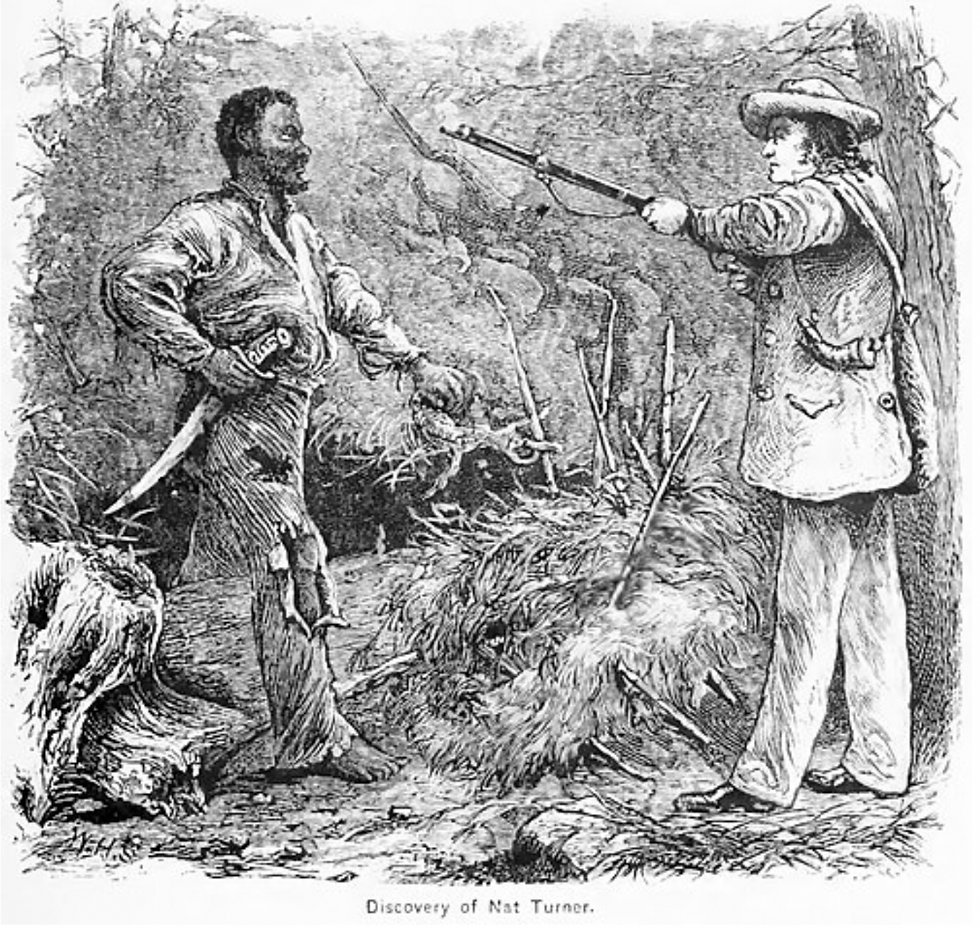
Acts of resistance took various forms, with Nat Turner’s rebellion being a pivotal one. In August 1831, Nat Turner struck fear into the hearts of white Southerners by leading the only effective slave rebellion in U.S. history. Born on a small plantation in Southampton County, Virginia, Turner inherited a passionate hatred of slavery from his African–born mother and came to see himself as anointed by God to lead his people out of bondage.
In early 1831, Turner took a solar eclipse as a sign that the time for revolution was near, and on the night of August 21, he and a small band of followers killed his owners, the Travis family, and set off toward the town of Jerusalem, where they planned to capture an armory and gather more recruits. The group killed around 60 white men and women before the arrival of state militia forces. 100 enslaved people lost their lives on the run.
Turner was captured, tried, and hanged.
It was not until January 1, 1863 when Abraham Lincoln issued the Emancipation Proclamation. It was the day slaves were praying for, the day which slowly became a fantasy as these men and women worked laboriously under the sun. The Proclamation declared “that all persons held as slaves” within the rebellious states “are, and henceforward shall be free.” Although the Emancipation Proclamation did not end slavery in the nation, it captured the hearts and imagination of millions of Americans and fundamentally transformed the character of the war. After January 1, 1863, every advance of federal troops expanded the domain of freedom. Moreover, the Proclamation announced the acceptance of black men into the Union Army and Navy, enabling the liberated to become liberators. By the end of the war, almost 200,000 black soldiers and sailors had fought for the Union and freedom.
But the fight for equality and freedom was still not over.

It was the chilly evening of December 1, 1955, on a busy street in Montgomery, Alabama. 42-year-old seamstress Rosa Parks boarded a segregated city bus on her way back home. She was seated in the middle, a seat behind the “white” section. At the next stop, more passengers boarded the bus and when all the seats were full, the bus driver ordered the black passengers to stand so a white man could sit.
Parks refused.
As a result, she was arrested for violating the laws of segregation. In Alabama, it was illegal for a black person to not relinquish their seat in a public city bus upon the request of their white brethren. This incident completely revolutionised race relations in America, and ignited the Civil Rights Movement.
This incident led to the Montgomery bus boycott, which was the mass protest against the bus system of Montgomery. It was attended by the African Americans in Montgomery and an influential civil rights activist, Martin Luther King Jr. For 13 months, community members refused to take the bus. They rode bikes, joined coordinated carpools, or walked miles a day to keep pressure on the city’s bus company. The boycott eventually led to a Supreme Court decision ordering the city to integrate its bus system, making the boycott one of the Civil Rights Movement’s crowning achievements.
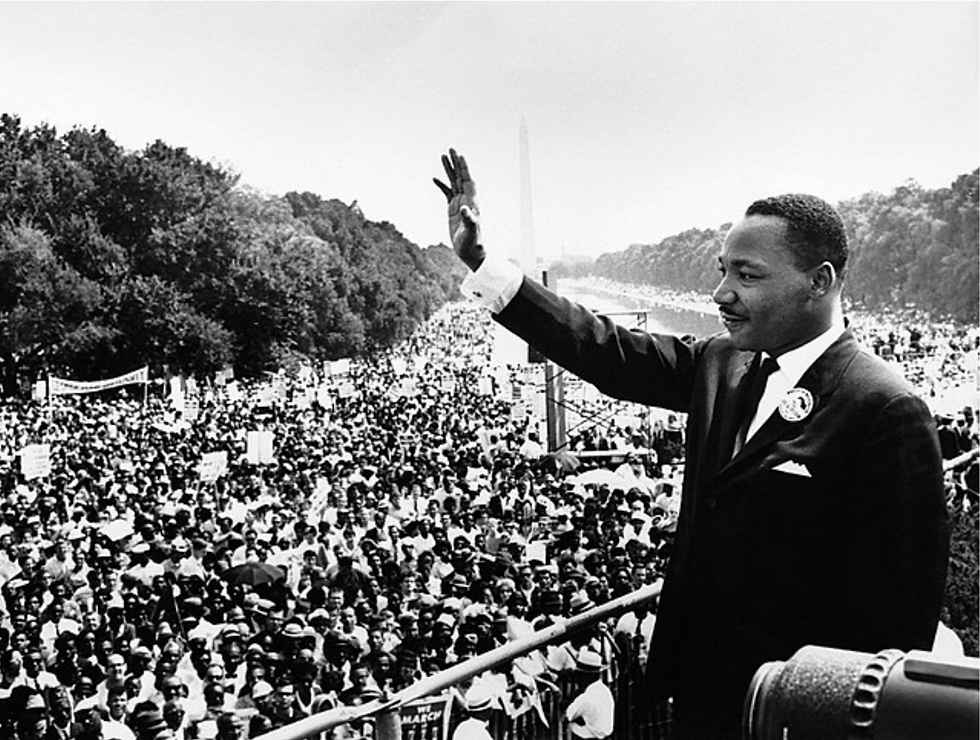
Martin Luther King Jr. was another prominent figure in the Civil Rights Movement. Inspired by the actions of Gandhi for India’s independence, he inculcated a similar approach to tackle systemic racism in the United States. His attempted assassination in 1958 at a book tour only reinforced his dedication to non-violence. He was the Montgomery bus boycott’s leader and official spokesman. The success of this boycott allowed him to grow as a leader and he eventually formed the Southern Christian Leadership Conference (SCLC) with other civil rights activists, which aimed to achieve full equality for African Americans through non-violent protest. In his role as SCLC president, he traveled across the country and gave speeches on non-violence protest. What made King so well known was his ability to speak eloquently and he did so in his speeches. Through his speeches and actions, he sought to empower black individuals to embrace their heritage and assert their rights.
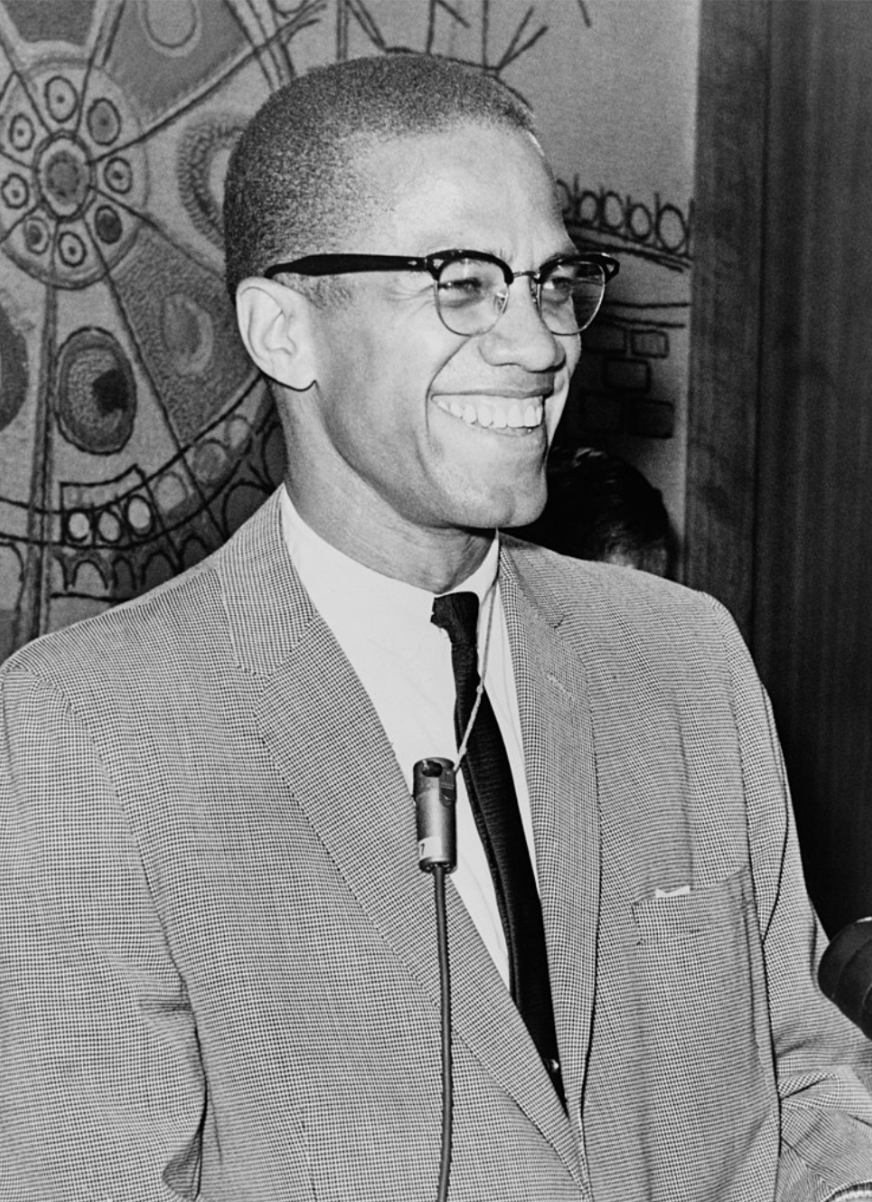
Malcolm X also played a critical role for black rights. He was an articulate public speaker and had a charismatic personality. He expressed the pent-up anger, frustration, and bitterness of African Americans during the major phase of the Civil Rights Movement. He preached on the streets of Harlem and spoke at major tertiary institutions such as Harvard and Oxford. He criticised the mainstream civil right movement, challenging King’s central notions of integration and non-violence. He argued that more was at stake than the civil right to sit in a restaurant and even vote. To him, the most important issues were Black identity, integrity, and independence. In contrast to King’s approach of non-violence, Malcolm X urged his followers to defend themselves “by all means necessary”. He encouraged black people to take pride in their African roots and reject the cultural assimilation imposed by a predominantly white society.
From both the examples, black culture and pride played a crucial role in the Civil Rights Movement. Both Malcolm X and Martin Luther King Jr. recognised the power of cultural symbols and expressions. They both urged their followers to embrace their identity through the language used in their speeches and deeds performed.
The Black Arts Movement, also known as the cultural renaissance of the 1960s and 1970s, celebrated black identity, heritage, and creativity. It emerged as a response to the ongoing struggle for civil rights and aimed to redefine the narrative around black culture. During this period, influential black artists, writers, musicians, and performers emerged and used their platforms to challenge stereotypes and uplift black voices. Figures like Amiri Baraka, Nikki Giovanni, Nina Simone, and James Brown became prominent figures in the movement. They embraced their blackness and created works that reflected the experiences, struggles, and aspirations of black people.
Black artists incorporated various art forms, such as poetry, music, theater, and visual arts, to express their ideas and promote social change. They celebrated the beauty and resilience of black culture and history, reclaiming their narratives from a predominantly white perspective. The Black Arts Movement emphasized self-determination and encouraged black individuals to take pride in their heritage and challenge oppressive systems.
One of the notable features of the Black Arts Movement was its emphasis on jazz and other black musical forms. Black poets drew inspiration from jazz, incorporating its improvisational nature, rhythm, and spirit into their poetry. This fusion of poetry and music created a unique and powerful artistic expression that resonated with the experiences of black communities.
Black vernacular speech, African folklore, and experimentation with sound, spelling, and grammar were also prominent elements of the Black Arts Movement. Artists sought to break free from traditional literary conventions and embrace a language that authentically represented their experiences and cultural expressions.
The impact of black culture and pride on popular culture has been significant globally. Genres like jazz, blues, hip-hop, and reggae have not only entertained but also served as powerful forms of cultural expression. These genres have influenced mainstream music and have been instrumental in shaping popular culture. Furthermore, black fashion, hairstyles, and visual arts have also had a significant impact on mainstream trends. From African-inspired prints and designs to natural hairstyles and afros, black culture has challenged conventional beauty standards and celebrated black aesthetics. Black visual artists have also challenged the prevailing narratives through their thought-provoking and culturally rich artworks, inspiring conversations and pushing for greater representation.
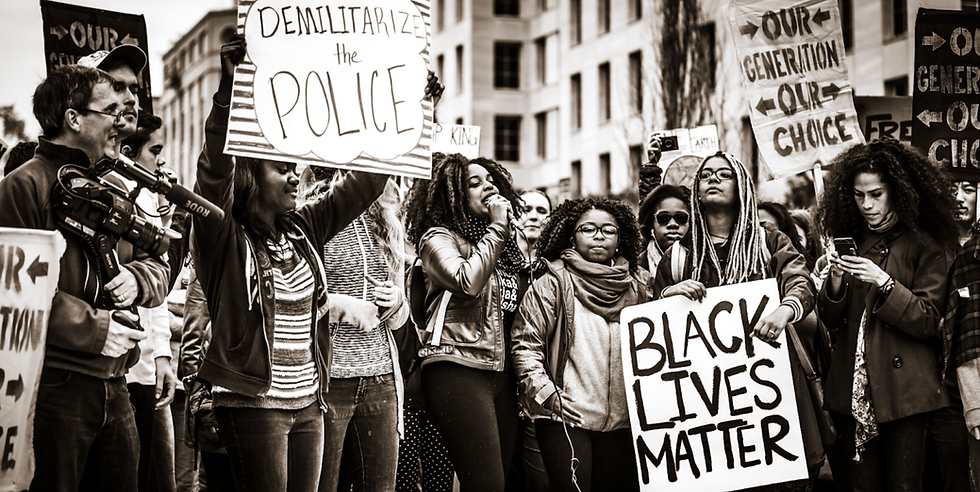
Contemporary movements have risen such as the Black Lives Matter (BLM) movement in an effort to remove systematic racism in the 21st century. Its primary concerns are incidents of police brutality and racially motivated violence against black people. Thousands of people took onto the streets with signs and posters demanding to be treated equally, to defund the police, and use metaphors to express their frustration with the justice system. In addition to fighting for change in racial equality, the movement has also sought to address issues regarding social equality such as the right to education and healthcare, employment, and the COVID-19 pandemic.
This movement inspired countless others from different backgrounds and it transcended borders. From Rio to Tokyo, people joined in solidarity with the BLM movement. The global reach of the movement sends out a message that systemic racism is an issue that requires collective action.
In a nutshell, the struggles faced by Black people from the transatlantic slave trade to the 21st century continues, but through music and the arts, they found a sense of identity and community and endured through the pain. The influence of black culture goes beyond activism. Popular music such as jazz or reggae molded our thought on music and brought forth greater representation. Through triumphs and tribulations, black culture is a testament to resilience, determination, and unity.
Works Cited
“U.S. Slavery: Timeline, Figures & Abolition.” History.Com, A&E Television Networks, www.history.com/topics/black-history/slavery. Accessed 14 May 2023.
E
lliott, Mary, and Jazmine Hughes. “A Brief History of Slavery That You Didn’t Learn in School.” The New York Times, 19 Aug. 2019, www.nytimes.com/interactive/2019/08/19/magazine/history-slavery-smithsonian.html. Accessed 14 May 2023.
“African American Song.” The Library of Congress, www.loc.gov/item/ihas.20019745. Accessed 14 May 2023.
"African and African American Storytelling.” NCpedia, www.ncpedia.org/culture/stories/african-american. Accessed 5 June 2023.
“The Emancipation Proclamation.” National Archives and Records Administration, www.archives.gov/exhibits/featured-documents/emancipation-proclamation. Accessed 5 June 2023.
“Black History Milestones: Timeline.” History.Com, A&E Television Networks, www.history.com/topics/black-history/black-history-milestones. Accessed 5 June 2023.
“Nat Turner - Rebellion, Death & Facts.” History.Com, A&E Television Networks, www.history.com/topics/black-history/nat-turner. Accessed 5 June 2023.
“Rosa Parks: What If I Don’t Move to the Back of the Bus?” The Henry Ford, www.thehenryford.org/explore/stories-of-innovation/what-if/rosa-parks/. Accessed 5 June 2023.
Germain, Jacqui. “The Montgomery Bus Boycott Proved the Power of Boycotts.” Teen Vogue, 17 Dec. 2021, www.teenvogue.com/story/montgomery-bus-boycott-what-happened. Accessed 5 June 2023.
“Martin Luther King Jr: Day, Death, Quotes.” History.Com, A&E Television Networks, www.history.com/topics/black-history/martin-luther-king-jr. Accessed 5 June 2023.
“Malcolm X.” Encyclopædia Britannica, Encyclopædia Britannica, Inc., 15 May 2023, www.britannica.com/biography/Malcolm-X#ref260832. Accessed 5 June 2023.
“The Black Arts Movement.” Poetry Foundation, www.poetryfoundation.org/collections/148936/an-introduction-to-the-black-arts-movement. Accessed 5 June 2023.
"Black Lives Matter." Wikipedia, Wikimedia Foundation, 4 June 2023. en.wikipedia.org/wiki/Black_Lives_Matter. Accessed 6 June 2023.

Comments